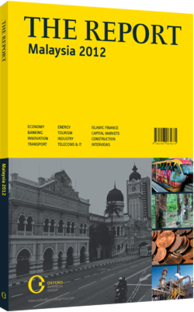Upscaling agriculture: Adopting advanced technology for greater yields
Recent efforts to upgrade Malaysia’s agricultural sector that include increased incentives for farmers to learn new techniques and adopt advanced technology are expected to lead to greater harvest yields and help meet rising domestic demand for food products. While the sector contributes around 12% of GDP and provides employment to some 16% of the national workforce, most of this is concentrated in two key segments, palm oil and rubber production. The contribution of the rest of the agricultural sector is estimated at 4%, though its share of employment is higher, as much of Malaysia’s farming is still labour-intensive. At present, the input of the non-oil and rubber farming sectors is around $6.5bn a year, but the government wants to see this more than double by 2020 to $16bn. To achieve this, Malaysia is trying to adopt smarter farming techniques. Agriculture was one of 12 separate National Key Economic Areas (NKEAs) identified under the Economic Transformation Programme (ETP), launched in 2010 as part of the government’s efforts to increase national income to over $500bn by 2020 and achieve developed nation status. The ETP made a clear distinction between agriculture and the palm oil and rubber industries, which fall under a separate NKEA.
REVENUE FOCUS: The ETP set out initiatives to boost the sector, including a growing focus on export cash crops (tropical fruits), tapping into the global herbal products market and increasing the usage of advanced technology to improve yields. Although the master plan for agriculture foresees a doubling of revenue, it only projects a modest increase in employment, with technology replacing labour-intensive practices and a shift in rural employment structures. On April 5, 2012, Muhyiddin Yassin, the deputy prime minister education minister, said it was important for farmers to explore value-added activities, rather than just limiting themselves to cash-crop production. Farmers should look at venturing into food processing or producing material from by-products to earn extra income, he said during the opening of a fertiliser plant. “To move forward, farmers must find new opportunities to enable them to earn long-term income,” Muhyiddin said. The ETP includes several projects related to these goals, including the establishment of an export-promotion centre for Malaysian processed foods, and support of a company which aims to produce packaged foods based on durian, a popular but seasonable fruit.
HIGH PRODUCTIVITY: Malaysia is also promoting research and development (R&D) in high-productivity agricultural technologies, including gene selection in crops and advanced reproductive biotechnology for livestock. In accordance with the top-level Mega-Science Agenda agriculture study, the Malaysian Agricultural R&D Institute (MARDI) is investigating ways to identify and selectively reproduce the highest-yield plants and animals. Its Centre for Molecular Marker Discovery and Validation in Serdang, Selangor, will identify desired crop traits via DNA markers rather than the conventional phenotypic observation, hopefully speeding up the development of high-yield varieties. The centre, which was established according to Agriculture entry point project (EPP) in the ETP, EPP14, is aiming to get high-quality seeds to the local market by 2015. A related project spearheaded by MARDI and agricultural firm Sime Darby would focus on introducing a fragrant rice variety for non-irrigated regions to satisfy local demand and cut rice imports. Additionally, MARDI is the lead on several livestock-related research initiatives.
SCALING UP: The sector EPPs have the potential to completely transform rural life in Malaysia. Currently the majority of farmers control only 1-2 ha on average, which means they cannot take advantage of economies of scale. Under the ETP farmers will be encouraged to band together into integrated clusters, forming medium-sized agribusinesses that could eventually move into attractive downstream activities.
While the days when agriculture was the mainstay of Malaysia’s economy are long past, new technologies could enable small farmers to maintain their lifestyles while enjoying high yields and access to world markets.
You have reached the limit of premium articles you can view for free.
Choose from the options below to purchase print or digital editions of our Reports. You can also purchase a website subscription giving you unlimited access to all of our Reports online for 12 months.
If you have already purchased this Report or have a website subscription, please login to continue.

